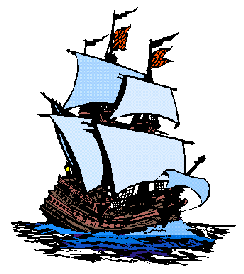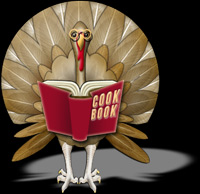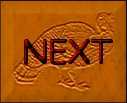| THE TRUTH ABOUT THE PILGRIMS & THANKSGIVING 
The First Thanksgiving 
The Pilgrims did have a feast in 1621, after their first harvest, and it is this feast which people often refer to as "The First Thanksgiving". This feast was never repeated, though, so it can't be called the beginning of a tradition, nor was it termed by the colonists or "Pilgrims" a Thanksgiving Feast. In fact, to these devoutly religious people, a day of thanksgiving was a day of prayer and fasting, and would have been held any time that they felt an extra day of thanks was called for. Nevertheless, the 1621 feast has become a model that we think of for our own Thanksgiving celebration and we do know something of the truth about it. We can assume, for example, that the harvest feast was eaten outside based on the fact that the Colonists didn't have a building large enough to accommodate all the people who came. Native People were definately among the invited guests, and it's possible. even probable, that turkey (roasted but not stuffed) and pumpkin in some form, found their way to the table. And it gets better. This is the way the feast was described in a first-hand account presumably by a leader of the colony, Edward Winslow, as it appears in Mourt's Relation: "Our harvest being gotten in, our governor sent four men on fowling, that so we might after a special manner rejoice together after we had gathered the fruit of our labors. They four in one day killed as much fowl as, with a little help beside, served the company almost a week. At which time, amongst other recreations, we exercised our arms, Many of the Indians coming amongst us, and among the rest their greatest King Massasoit, with some ninety men, whom for three days we entertained and feasted, and they went out and killed five deer, which they brought to the plantation and bestowed on our governor, and upon the captain and others. And although it be not always so plentiful as it was this time with us, yet by the goodness of God, we are so far from want that we often wish you partakers of our plenty." From this we know that the feast went on for three days , included ninety "Indians", and food was plentiful. In addition, to the vensison provided by the Indians, there was enough wild fowl to supply the village for a week. The fowl would have included ducks, geese, turkeys and even swans. Much of the information we have about the feast, and this period in the lives of these people, is the result of research conducted by the staff at Plimoth Plantation, the living museum in Plymouth, Massachusetts, that re-creates the lives of the Pilgrims with Mayflower II, the 1627 Pilgrim Village, and a native homesite. From this research we know about the foods and recipes that would have been available to them, and from two first hand accounts(the second was written by William Bradford, Governor of the colony for 33 years, and can be read in Of Plymouth Plantation 1620-1647), we have a good idea of how the village looked, what the colonists wore, how they spoke, what animals they owned and how they lived. We even know what games they played, what their views may have been on everything from their new home to religion and politics. 
Have a look at a plethora of Pilgrim Recipes you can place on your own Thanksgiving table! 
PAGE DESIGN, AUTUMN HARVEST BACKGROUND, & NEXT BUTTON BY FOREVER AMBER ANIMATION FROM JO'S WORLD 
|
 Free Forum Hosting
Free Forum Hosting